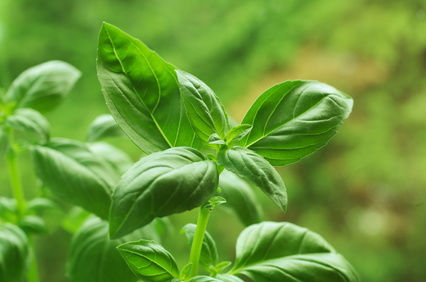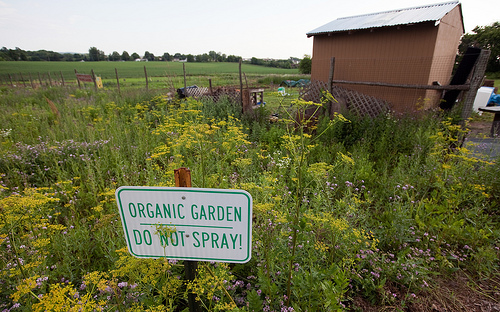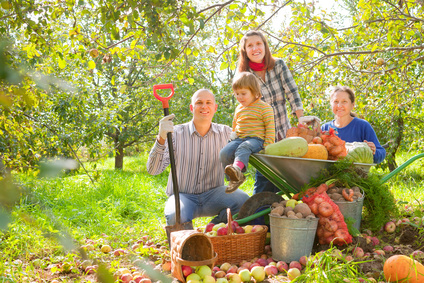
by Brian Bender
At first glance, the term gardening and the term lazy seem diametrically opposed.
Yet herb gardening is the perfect solution for increasing your health, decreasing your food costs, and making your meals taste better. All while adding minimal effort to the equation.
Herb gardening takes little effort and little space. For those new to gardening, herbs are the perfect plant to start with. Your health and your taste buds will thank you!
Herb Gardening for Flavor
Some of us were raised thinking herbs are simply the garnish on the side of your main meal you often aren’t even supposed to eat. But you can add them to chili, tacos, pizzas, sandwiches, salads – you name it.
Herbs are incredibly flavor-rich plants that add depth and complexity to nearly any meal you’re interested in making.
Add heaps of them. Throw in a cup full of basil or a combination of mint and parsley and suddenly you have an entirely new dish. It’ll make your own meals sparkle. And I’ve impressed more than a few friends and family member with these simple additions.
But there’s one problem.
A cup’s worth of basil isn’t cheap. And if you start adding large quantities to your dishes often, the cost will quickly add up.
The simple and elegant solution is to grow your own.
Herb Gardening on a Budget
Herbs are probably some of the simplest vegetables to try first when learning to garden. They grow easily and can often be grown both indoors and outdoors.
One of the best tricks for starting an herb garden is to use cuttings. From a bunch of herbs you buy from the store, simply cut one of the stems about halfway up so as to keep the top leaves. You can also cut below the next row of leaves. Just be sure to leave free stem below. Make the cutting with a sharp knife that doesn’t compress the stem much. This will damage your stem’s ability to take up water.
Then place that cutting in a glass of water and place it on a window sill that gets some sunlight throughout the day. Then leave it for about a week.
Soon, roots will begin to emerge into the water.
When the roots are around 0.5-1-inch-long, transplant them gently into some potting soil. And, voila! Your herbs will take root and you now have an herb garden!
From this cutting you can now grow this plant, expand its leaf production, harvest, and enjoy! And if you are really ambitious, you can let one or two go to seed. Do this by letting the center stem flower without harvesting or cutting it. This signals to the plant to stop growing leaves and start producing seeds.
Coupled with some homemade compost, you have now supplied yourself with a never-ending rotation of free herbs!
And while it may sound like effort, it hardly adds up to more than a few minutes of work per week after initial planting to water, harvest, and keep these guys going.
Herbs also take up very little space. So whether you have a large yard ready to cultivate or are an urbanite with just a balcony or windowsill, herb gardening can find its way into your life.
Herbs for Health
Now that you have a steady supply of free herbs, you can relax knowing you are not only adding flavor to your meals; you are also adding loads of nutrients.
I wanted to reduce my grocery bill as well as make my meals flavorful and easy. Herbs satisfy this trifecta by making sure you are getting tons of essential micronutrients, fiber, and phytochemicals. These nutrient-dense veggies are essentially miniature, flavorful multivitamins!
Herbs are incredibly healthy. They are high in just about every essential mineral, like magnesium, phosphorus, manganese, potassium, zinc, selenium, iron, copper, and calcium. They’re also high in many essential vitamins, like thiamin, riboflavin, niacin, pantothenic acid, pyridoxine, folate, and vitamin C. And the phytochemicals they supply, like many kinds of flavonoids, have also been shown to boost immunity, fight inflammation, and reduce your risk for many chronic diseases.
Herbs are also fiber-dense. Fiber is sorely lacking in many of our diets, but it has been shown to be a major player in healthy diets that thwart disease. Fiber has been shown to help your immune system, help control blood lipid levels, regulate insulin, and even lose weight by making you feel fuller for longer.
There are side benefits to health, as well. Despite the small effort, tending to the garden adds just a bit more movement to your day. And the mental break you take while gardening helps alleviate stress, too.
Herb gardening is a win-win-win. You can add flavor to your meals, increase your health, add little work for the effort, and can potentially be produced for free, forever.
All you need to do is get the ball rolling. Start with a bunch of basil, parsley, or mint, place a cutting in a jar of water, wait about a week, and transplant it into some soil.
Soon, optimizing the effort regarding timing of planting and harvest, as well as the quantity you’ll need to satisfy your taste for herbs, will keep you going year-round!
(Brian Bender, PhD, is a certified nutritionist and biomedical engineering. Brian cofounded Intake, a medical device company working on helping you better track your nutritional intake patterns towards its mission of making proper nutrition the number one priority in global health.)





Hey thank you for sharing this article about the importance of herbs other than just garnish on our foods. This article tells a lot about pocket friendly herb gardening along with the reasons to do so. Thank you for sharing this